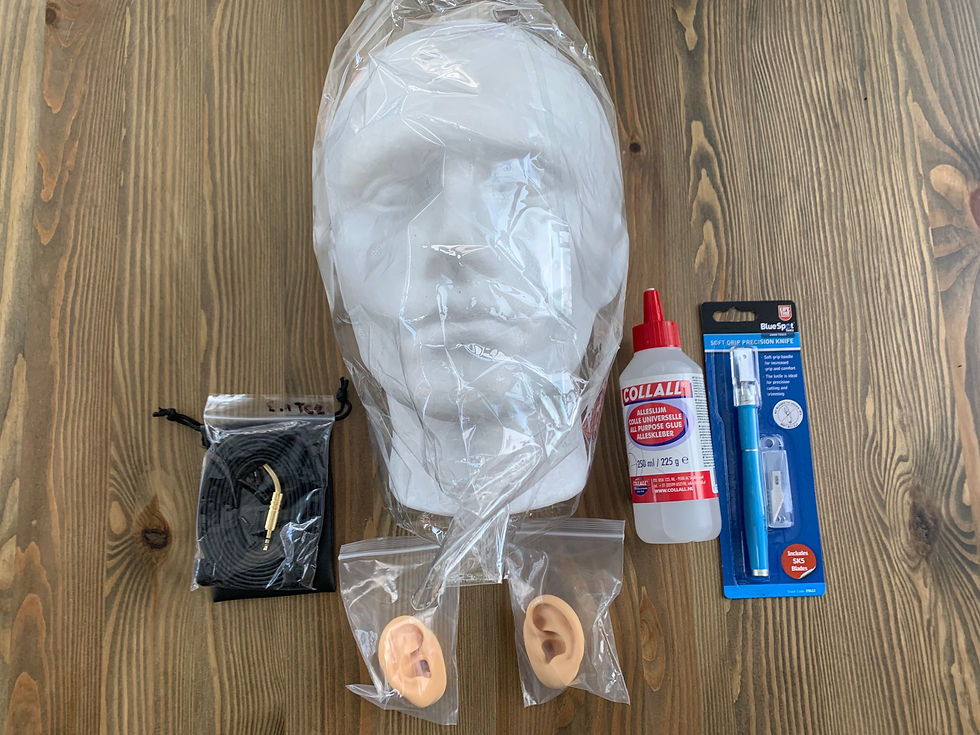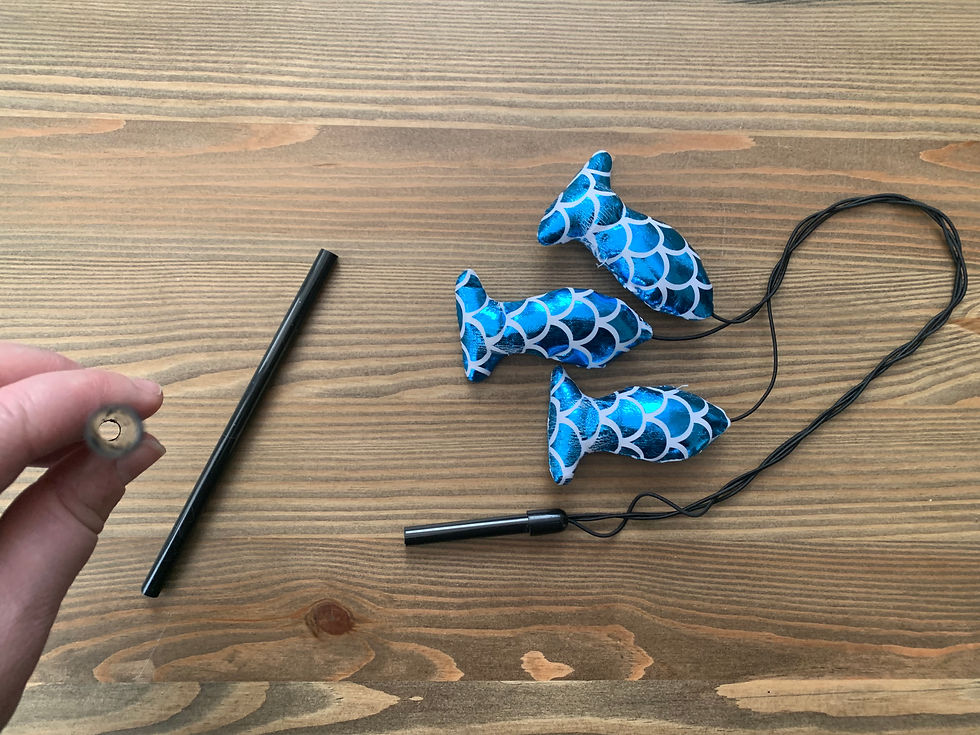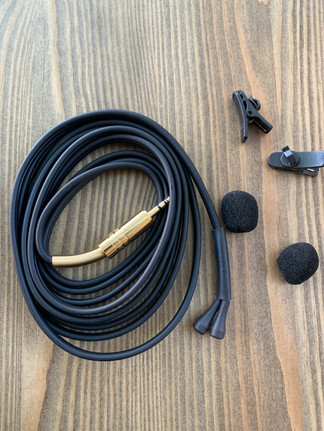World, meet Dumbert
- Dez Hulley
- Dec 7, 2021
- 4 min read
I’m going to start this blog by saying this; Every sound recordist needs a dummy head in their life. Why? Well for a start, binaural sound reproduction is fun. Also, thanks to advancements in the fields of virtual reality, immersive technologies and gaming, spatial and binaural sound reproduction has made a full resurgence and is arguably, finally here to stay.
There is a myriad of dummy head and binaural microphones out there, a few of which I mentioned in my previous post. The cost of these mics can reach over an extortionate £7000. Suffice to say, even if I was a binaural purist and as flush as Jeff Bezos, I wouldn’t be keen to drop that amount of dosh on a mannequin head with two tiny electret mics for ears.
As my days as a financially diminished ‘mature-student’ ticked by, I couldn’t shake the idea of not having a dummy head to call my own. Let’s be honest, they do reproduce a fantastic binaural stereophonic image. The solution to my woes? Build one. And I did, for £65.
I have not only added a valuable piece of kit to my microphone arsenal, but I have also quite literally made, a recording buddy… Albeit that he is inanimate. World, meet Dumbert.

In the interest of sharing, below is the step-by-step process of how I birthed him.
Step One: Acquire Parts.
Naturally, I did a little research as to what the bare minimum of parts were that I would need for the build and came up with the following:
A Styrofoam head
Realistic, silicone, human-sized ears
Pair of omni-directional electret mics
Craft knife
DIY Glue
I found the head, ears and knife on Amazon for a total of £40,97. The glue I had in my cupboard at home from a previous DIY project. The ears were the most expensive at £23,99 and I probably could have found something slightly cheaper on eBay but I figured that because they were integral to an accurate binaural image, I would splurge a little on them.
I did the most research on the microphones and tossed with the idea of physically making them myself with cabling, electret capsules, capacitors and solder… but ‘aint no mature-student got time for that’. I trawled the internet for an economical microphone solution and stumbled upon a site called Micronic. These guys do spy surveillance and sell anything from trackers, to hidden cameras and stash containers. They also happen to sell a super affordable set of miniature binaural lavaliers for £24.99. The lazy miser in me rejoiced.

Step Two: An Auditory Lobotomy.
Using the craft knife, I removed the styrofoam ears from the head, carved a space for the silicone replacement ears and attempted to drill a hole through the head to make space for the mic cables.
Note: Working with a drill and Styrofoam is not fun. It holds a static charge, sticks to everything, and evades a vacuum cleaner better than the COVID-19 Omicron variant evades the vaccine.
I eventually abandoned the drill and opted to smash a hole through the ears using a wide Philips screwdriver. It was way more effective, and my styrofoam-anxiety levels dropped. I also smashed a hole through the base of the neck in order to make way for easy cable routing through the head, to the newly created ‘ear canals.
Step Three: Happy New Ears.
I punctured holes through the silicone ears using a styrofoam-free drill bit and then moved on to installing the mics.
This part was the trickiest as I had to route the cables through the base of the head and out the ears. It was near impossible, but thanks to a random cat toy (yes, you read that right) I had laying around the house, I made it work. I destroyed the toy to use the shaft as a funnel, for ease of threading.
Sir Purcival (the cat) was mortified at the destruction of his favourite toy. But I’m not soul-less - he got a new one the next day.

After finally managing to thread the mics through the head and ears, I was able to glue the new silicone ears in place. Dumbert finally had hearing. I marveled at my creation like an obsessed scholar.

Step 4. Testing, testing 123…
Eager to determine how well Dumbert heard the world around him, I plugged him into my handy Zoom H1N recorder, took him outside and hit record. It worked, and the binaural stereo image was almost as defined as my own hearing. There was only one teensy (read major) problem… I had routed the mics inversely *FACEPALM*. After a mild, internal meltdown at the thought of having to re-route the mic cables using a cat toy again, I took a deep breath and rectified the situation.
The house was covered in Styrofoam, my cat was bleak with me, but I was proud of my monstrous creation. My binaural mommas-boy, Dumbert.
PS: Truth be told, in total he cost £65,97 and not £65 but let’s be honest, at 1/100th of the price of an expensive, professional dummy head does the extra 97p really matter? Stay tuned to this blog to listen to a few future, raw recordings with Dumbert.



















link link link link link link link link link link link link link link link link link link link link link link link link link link link link link link link link link link link link link link link link link link link link link link link link link link link link link link link link link link link link link link link link link link link link link link link link link link link link link link link link link link link link link link link link link link link link link link link link link link link link link link link link link link link link link link link link link link